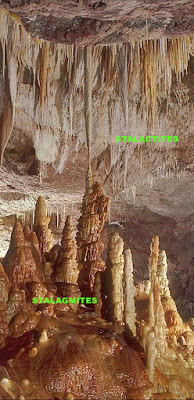Most likely, the snake that comes to mind when you read this title is the living anaconda. Actually, the world’s largest snake is a fossil. It is the middle Paleocene (58 to 60 million years) Titanoboa cerrejonensis Head et al., 2009, from Cerrejón, northern Colombia, South America. Titanoboa belongs to family Boidae, which includes boas and anacondas.
This sketch shows a scaled comparison between the size of a 6-foot tall human and a reconstructed 42-foot (2,500 pound) gartantuan Titanoboa cerrejonensis.
Based on an exceptionally large vertebra, some fragments of a jawbone, and other bones, Titanoboa cerrejonensis has been calculated, on the basis of mathematical modeling, to have been up to 42 feet (12.8 m) long and weight more than one ton (about 2,500 pounds). The very interesting details of how the remains of this snake were originally discovered were written up in an article (“How Titanoboa, the 40-foot-long snake was found”) in the Smithsonian Magazine (April, 2012). This article is available online for free.
Titanoboa cerrejonensis lived in a swamp area within a Paleocene tropical-forest environment. Although this snake resembled a modern-day, tree-dwelling boa constrictor (which can be up to 14 feet long and 100 pounds), T. cerrejonensis behaved like the South American semi-aquatic green anaconda (Eunectes murinus), which is up to 15 feet long and about 500 pounds. Based on the remains of the jawbone, researchers determined that the head of T. cerrejonensis was about two feet long and had many more teeth than anacondas, which, as mentioned above, are classified also as boas. Titanoboa cerrejonensis probably ate crocodiles, turtles, and fish.
While on the topic of snakes, I thought that you might want to know when the earliest true (no legs) snakes appeared in the fossil record. The answer is about 100 million years ago during the Cretaceous Period (late Albian to Cenomanian time). These earliest snakes probably evolved from burrowing lizards.
Lastly, you might find it interesting to know that the earliest venomous snakes (e.g., cobras and sea snakes) appeared 25 million years ago (late Oligocene/early Miocene).





























